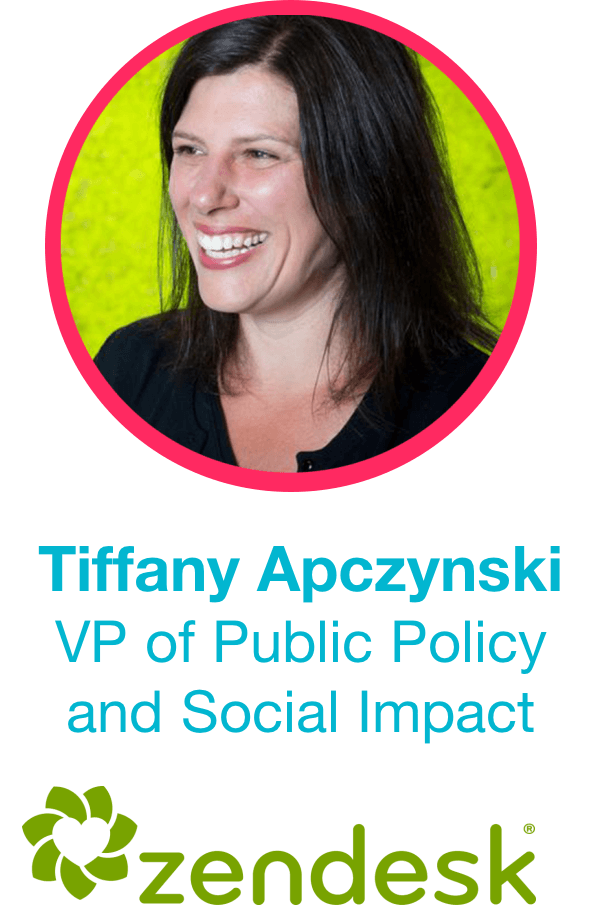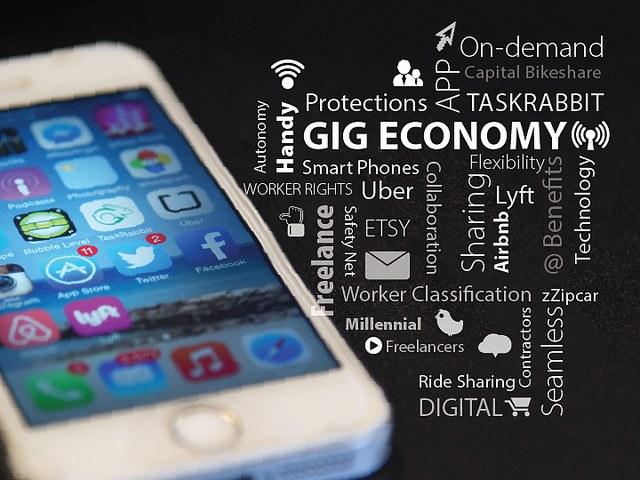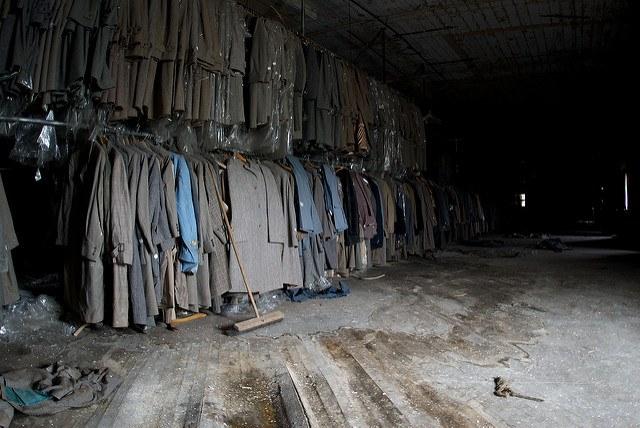Why You Need A Sustainability Strategy


Editor's note: This post was originally published on the Sustainabilist blog.
By Chris Librie
Business leaders often ask me: What is the value of a sustainability strategy? And it surprises me for two reasons. Firstly, what leader doesn’t want to ensure the long-term health of their company? A strategic approach to sustainability is absolutely necessary to do just that. And secondly, I’m disappointed because it suggests that sustainability professionals like me have not laid-out our case clearly enough.
In other words, what we have here is a failure to communicate!
So, in this two-part post, I hope to explain why your company needs a sustainability strategy, no matter how big or small that company may be. In the next installment, I’ll provide some tips for how to implement sustainability strategies successfully, based on my experience in doing just that at two major companies.
First though, let’s start with the why.
1. It’s good for the P&L
Well-implemented sustainability strategies can improve financial performance. Sustainability initiatives often cut costs – think energy and transport efficiencies in your offices and operations. And sustainable companies outperform their peers in terms of return on assets and return on equity, according to the Harvard Business Review. The widespread misconception is that sustainability adds cost and complexity, when in fact it helps make your business more efficient and profitable.
2. It builds employee engagement
Much has been written about the importance to millennials of purpose at work. I happen to believe that all employees prefer to work at a company that actively addresses its environmental and social impacts. And according to SAP’s sustainability report, there’s a quantifiable link between their sustainability strategy, greater employee productivity and long-term retention. Engaged, committed employees are not only more productive, but they save money in recruitment and training costs
3. It’s expected by all your stakeholders
Besides employees, your business has many other stakeholders – from investors, to customers, to government and non-government organizations. All these expect you to operate your business in a sustainable manner, and many will choose to invest, or to purchase your product, based on your sustainability profile. Increasingly, government and NGOs are highlighting – and even shaming – companies that do not meet their standards. Check out the Federal Supplier Greenhouse Gas Management Scorecard, for an example.
4. It helps differentiate your business
Maybe you manage your suppliers with an eye to diversity, or treat employees progressively, or your products are more efficient than the competition. I’ve seen all these factor into tough RFPs, and often provide the tipping point to choose my company’s proposal over another’s. And that drives sales.
5. It’s great for innovation
When sustainability is fully integrated into your business, it helps create insights about new product innovations. I’ve seen this at packaged goods as well as technology companies. You hit the sweet spot when your sustainability strategy is aligned with your customer’s needs – such as providing more energy or material-efficient solutions.
Hopefully, this brief sampler has demonstrated that sustainability strategies can be of benefit to companies of all sizes. The next, logical question is “how do I create and integrate that strategy?” And that will be the subject of my next post.
Image credit: Pixabay
Chris Librie is an experienced professional who has created successful sustainability strategies and top-tier results at two major corporations. He believes strongly in the business-building benefits of sustainability, as well as its importance in driving business purpose. And Chris loves building communications plans to help companies tell their stories to internal and external stakeholders.
Airlines to Test Alternative Fuel


As the world turns its attention to addressing global warming, the airline industry, too, is researching ways to do its part and lower greenhouse gas emissions. One option is investing more into the development and integration of alternative fuels. Biofuels made from vegetable oil, corn and even household garbage are all very real possibilities.
Air travel is one of the largest contributors to environmental pollution. Traditional jet fuel contains a combination of various pollutants, like nitrogen oxide, sulfur dioxide and carbon dioxide. This noxious combination is what creates the greenhouse effect that harms our atmosphere.
The aviation industry knows it is a large part of the problem where climate change is concerned, and it's already working on a transition to alternative fuels. The technology already exists. But manufacturers haven’t been able to produce the necessary quantities for widespread use.
Where the industry is now
Airlines like Virgin and JetBlue have already begun to integrate eco-friendly fuels into their fleet of aircraft, but they’re limited in terms of how frequently these substitutes for traditional jet fuel can be used. To put it in context, JetBlue just put in an order of 330 million gallons of renewable fuel. Only 100 million gallons are produced annually, and despite JetBlue’s record-breaking request, the need in the aviation industry numbers in the billions of gallons.
There’s clearly progress that must be made on the production side of things if all airlines are to transition to more eco-friendly energy options.
But this is proving difficult, considering that investment in aviation biofuels is on the decline — even though the overall consumption of fossil fuels in the U.S. has dropped from 85.7 BTUs in 2005 to 80.4 BTUs in 2014 — and should continue to do so in the future.
What the future holds
Both in the United States and in other parts of the world, companies have vowed, with the help of their governments, to make better efforts to conquer the issues facing sustainable aviation. The recent U.N. accord agreed upon by 191 nations sparked much of this action, and there is hope that it will also create a greater demand for biofuels in the near future.
The U.K., for example, laid out plans that will take the country up to the year 2050, with the overall goal being to bring CO2 emissions back down to 2005 levels. By the year 2020, the U.K. hopes to have made more progress in waste gas capture, which Virgin already tried in Shanghai. In the U.S., the Federal Aviation Administration is working to grow production of alternative jet fuels, and hopes to have 1 billion gallons of drop-in fuels from renewable sources by 2018.
As a large contributor to global CO2 emissions, it should be obvious that these types of positive moves the airline industry must continue to employ at a rapid clip. It isn’t enough to give it a try and hope for the best. If nothing substantial is done to curb emissions and make the transition toward more sustainable methods of fueling aircraft, today’s numbers are expected to triple by 2050.
The future isn’t a bleak one, though. The pledges made by countries across the globe in the recent U.N. accord show a collective commitment to conquer this problem. JetBlue’s recent order of sustainable fuel is most likely to be the first of many similar orders in the coming years as airline companies, governments, and other private technological industries work together to overcome obstacles in renewable energies and biofuels.
Image credit: Pixabay
The Evolution of Collaborative Corporate Giving & CSR


By Jarrett O'Brien
We were fortunate to spend a night this summer with experts in corporate social responsibility (CSR), nonprofit partners, and over 100 people who came to our event hosted by Zendesk. The theme was corporate culture and community impact, which focused on the role companies play in partnering with nonprofits to engage in collaborative giving, and the impact that has on employees and society at large.
Presentations, a panel moderated by TriplePundit's Nick Aster, and conversations with nonprofits orbited around a few shifts in thinking which, if more companies followed, could leave an enormous ripple of social impact in our communities.
Bake giving into core business strategy
Tiffany Apczynski of Zendesk influenced the title when she said CSR “used to be the icing, but now it’s the batter.” Erika Balbuena of Twilio also talked about the evolution in strategy. “Traditionally [CSR] didn’t need to align to core business needs or product. Now the consumer is demanding different, our employees are demanding different, and we are being proactive and expecting better of ourselves as companies." Twilio’s program was spurred from requests from the nonprofit community to donate its core product and expertise, which morphed into the company's mission to send “a billion messages for good” through nonprofit use of its communications platform.There has been a movement from these programs being an ancillary employee benefit to a core business strategy. The major takeaway was that the most successful programs with the largest impact strategically align social impact with their core competencies and weave it into their company culture.
Gain purpose through perspective
In the past a leader would set the vision for a corporate giving program, or it grew organically bottom up from the employee's interests. However, today companies are balancing the needs of all stakeholders internally and externally to find their focus. Joan Scott of Dolby spoke about this shift in getting to the heart of your what your program’s mission should be. “We looked at what employees’ interests were, what aligned well with the business, and what real community needs are … then it’s pretty basic as you look at the circles and see where they crossover.”So, like a Venn diagram for good, Scott balances Dolby's goals and employee interests in conjunction with their community. The company's mission grew out of this analysis to inspire the next generation in science and art, as well as address critical community needs, which brings us to the next theme.
Build mutually meaningful partnerships
In the old approach, companies proposed a partnership based on what they wanted to do, versus asking about nonprofit and community needs. Leah Laxamana talked about how Twitter approaches finding partners for its program. “Listen and respond. The NeighborNest came about because we identified a need in the community. One of the biggest pieces of feedback from the focus groups we did with the families and homeless shelters was, thank you for involving us in this thinking and design process.” The NeighborNest is a collaboration between Twitter and multiple nonprofits as a technology and learning space focused on helping low-income families, even providing child care.The future of looking for nonprofit partners is no different than finding your next business partner for sales or innovation. Assessment and alignment around needs, resources, value and shared vision should be evaluated to achieve the greatest impact.
Crowdsource innovative experiences
We live in an experience economy and philanthropy is one of the most meaningful forms of engagement for your employees. Diane Solinger of Google understands this better than anyone, owning employee engagement for over 60,000 people, and she shared her teams point of view. “It’s about enabling and empowering Googlers to use their skills, talents and resources to have an extraordinary impact on themselves and the world. We're looking for transformative experiences for them to increase their connection to each other through volunteering and charitable giving to create a sense of community, to enrich our culture, and to develop their skills and leadership capacity through our tool kit.”We all have different interests, causes we care about, and levels of maturity when it comes to giving. Creating a “tool kit” and share templates enables your employees to crowdsource and sustain the program themselves, while providing transparency about their needs, passions and purpose.
Sustain and share impact
A program’s mission is to create greater social impact in conjunction with organizational value, however sustaining and making strategic decisions requires direction and measurement. Apczynski talked about how her team at Zendesk accomplishes this. “We can measure how happy our employees are after every single volunteer activity … We look at brand and if people are responding to our brand and CSR is a piece of that, so we've devised our own metrics." Apczynski also spoke about the value to revenue, citing statistics like “90 percent of consumers are more likely to switch brands if they find one associated with a good cause.”Studies and reports are coming out all of the time supporting investment in corporate giving and employee engagement. Bigger companies are beings asked for ESG (environmental, social and governance) reporting like any other data. Those numbers in combination with human stories of impact become content you can share that creates awareness for nonprofits and compels other companies that don’t have programs. Not to mention it attracts consumers, employees and investors to your brand.
In summary
Here’s a bit of advice on where to start from those who have been down your path before. Scott shared: “I would find a champion who has some clout within the company. It doesn't have to be C-level or the top, but someone who can help you navigate and get a core of folks together to work with you and get some of those people to support you.” And Apczynski followed up: “Go rogue. If there are six people on your team, go to Glide and sign up for a volunteering shift. You can't stop the snowball."Our organization ThinkThank is always happy to help build that initial snowball of a CSR program with you. We want to also give a huge thank-you to everyone that made that night happen: the speakers, Zendesk for the space, and TriplePundit for moderating the panel. But additionally Google for matching Handup gift cards worth $2,500 for those experiencing homelessness, the nonprofits that shared their stories, and all of our wonderful volunteers.
Jarrett O'Brien is the Co-founder of ThinkThank.
Indirect Suppliers, Deforestation and Brazil’s Beef Industry


When it comes to climate change, Brazil has long been in the crosshairs for the continued deforestation in the Amazon, as well as across the country’s savannah-like cerrado region.
Environmentalists point out the Amazon's crucial role as the region’s and even world’s lungs, and the cerrado is also important for its biodiversity. Brazilians respond with the valid point that it is their right to develop their natural assets into capital however they see fit: Europeans, and later North Americans, turned forests into financial assets as they evolved from agrarian to wealthy industrial societies. From Brazil's perspective, they are doing the same, and much of this transformation can be seen with the growth of the nation's beef industry.
During last week’s Global Roundtable on Sustainable Beef in Banff, Alberta, Canada, TriplePundit spoke with Simon Hall, manager of the tropical forest and agriculture projects at the National Wildlife Federation, about where Brazil’s meatpacking industry has made strides and where improvements need to be made.
Why is Brazil’s beef industry central to this debate?
Prominent in this debate is Brazil’s beef industry, which boomed in recent years as more Brazilians can now afford this protein and more regions abroad (especially China, Russia and the European Union) import it. Environmental NGOs say the global beef sector is the world’s largest contributor to deforestation -- even more than palm oil, soy and timber – and what is happening in Brazil sums up how this industry operates.
The good news on deforestation in Brazil, Hall told us, is that after years of tensions between Brazil’s government, business and environmental activists, the evidence suggests the sector is changing its business practices. It's becoming much more cognizant of its impact and, therefore, more responsible. Systems such as PRODES, a satellite monitoring system that gauges deforestation in the Brazilian Amazon, and CAR, which requires landowners to electronically register environmental information about their properties with the Brazilian government, are among the tools meatpackers can use to ensure their supply chains are more responsible and sustainable.
Indeed, improved technology and greater transparency contributed to progress across Brazil. But a massive hurdle remains, say environmentalists and human rights activists: The indirect suppliers that comprise an integral cog in Brazil’s complicated beef supply chain mean the industry still contributes to significant deforestation.
So, what are indirect suppliers?
In the more linear beef supply chains throughout the European Union, Canada and the U.S., a large beef producer such as a Cargill or Tyson Foods generally has tight control over all stages of production. This is true from breeding to fattening to slaughter, either within a company's operations or via long-term contracts with ranchers and producers. The upshot is that traceability is simple, for the most part, as monitoring cattle from farm to retailer is a relatively seamless process.
But in Brazil, the beef industry’s supply chain is much more nebulous. Indeed, the country’s three largest meatpackers, JBS, Marfrig and Minerva, have made much progress. Their use of satellite imagery and other technologies to monitor direct suppliers offer stakeholders transparency.
Nevertheless, there is a huge caveat: Those operations only go as far as the suppliers who have contracts with these meatpackers – and those direct suppliers only offer traceability during their cattle’s last three to 12 months, which is the fattening stage before slaughter.
The problem is that during the three main stages of livestock raising – breeding, rearing and even fattening – the big three Brazilian meatpackers' direct suppliers are likely to purchase cattle from ranchers who could be responsible for illegal deforestation. For example, an independent Brazilian rancher could suddenly decide to sell a herd of calves to his or her counterpart due to poor cash flow. Or livestock could be auctioned off if the price for cattle reaches a high mark. So, instead of an industry that operates based on long-term contracts -- which would improve traceability and environmental and social performance -- the result is an unwieldy spot market that makes it a challenge for companies to guarantee their cattle were raised without any links to deforestation.
Those dynamics make it possible for cattle to be sold several times before it's acquired by a JBS, Marfrig or Minerva. And along the way, someone, somewhere could have cut corners -- as in cutting down forests to create more pasture land. Indirect suppliers may also participate in “land grabbing,” as in illegal occupancy or even stealing land to which they have no title, which is endemic across Brazil.
To be clear, many players within the beef industry are aware of these problems and are working hard to solve them.
“While there are still a lot of issues, it’s important to recognize the progress that has been made within Brazil's beef industry,” Hall told TriplePundit. "It’s always easy to point out the flaws. But let’s remember: Those three meatpackers have invested considerable resources in sophisticated monitoring and purchase-control systems that check thousands of properties, enabling them to monitor, support and, if necessary, block suppliers who are not compliant.”
Change unfolded over several years. The big three Brazilian meatpackers' improvement on environmental and social issues dates back to agreements they made with Greenpeace back in 2009. The results are improvement on the environmental front, as now these meatpackers will not purchase cattle from suppliers who are linked to recent deforestation. But as Hall pointed out, the meatpackers’ systems do not yet effectively monitor indirect supplying ranches. Since cattle can spend up to 75 percent of their lives on these indirect supplying ranches, with nearly no monitoring or accountability, the beef sector must focus here if the industry can come close to becoming truly deforestation-free.
What are the potential solutions?
Despite these frustrations – recently aired by Greenpeace -- Hall made it clear that the big three Brazilian meatpackers cleaned up their supply chains far more rapidly than anyone could have imagined just a few years ago. But improvements in three key areas must be made.
First, more meatpackers must commit to the level that JBS, Marfrig and Minerva have, which would make more of Brazil’s beef supply chain more transparent. That transparency, in turn, makes it possible to advance traceability standards for indirect suppliers. And finally, more third-party audits are needed to ensure companies follow through on their deforestation and social responsibility commitments.
The bottom line is: Brazil’s beef industry, as it feeds more of the world, must become more efficient. Environmentalists are quick to malign the beef industry in North America, but the cattle-raising process in the U.S. and Canada occurs relatively fast in what is generally a 24 month- to three year-cycle.
In Brazil, however, the process takes another year; and that means the industry is exposed to a larger window of time during which trees can be felled or local residents can be booted off their land. Better feed, as in improved grass blends that are easier to digest and therein more nutritious for cattle, can help shorten that cycle. In turn, the environmental benefits would include as much as 25 percent less methane emitted into the atmosphere as well as reduced water consumption. Results would also trickle down to an overall improved stewardship of the land, which means less pressure and temptation to cut down forests and replace them with pastureland or farms growing feed.
Finally, while the world focuses on the Amazon, multi-stakeholder action across the region is working. But now the beef industry is using land and resources across the cerrado – a region that does not have the star power of Brazil’s rain forest biome, but is still important for its biodiversity. Monitoring systems that work well in the Amazon must be adapted and applied to this region in order to mitigate deforestation and the industry’s impact on human rights.
Image credit: CIFOR/Flickr
Why Startups Skimp on Worker Safety


A recent Buzzfeed investigative report uncovered labor issues at the warehouses of popular food-delivery startup Blue Apron. It's another example of tech startups skimping on worker safety and not integrating low-level employees as meaningful members of their company.
We've heard this story before. Amazon has similar issues in its warehouses. The e-commerce giant relies on temporary, contract labor and enforces high work quotas that often drive workers to exhaustion – even death in one case. Uber keeps cutting its drivers wages even as its founders become wealthier and wealthier, and resists any effort by workers to organize through lawsuits or blatantly deactivates the accounts of drivers who complain. The ride-sharing company is so averse to regulations that it will even leave a city – as it did when it departed Austin, Texas, earlier this year -- rather than compete on a fair playing ground.
In the modern tech industry, companies are funded by venture capitalists that require massive growth to keep up with inflated valuations. Strangely, profits don't seem to matter in this equation (for example, Uber has yet to turn a profit). The cash keeps flowing, but the cash and benefits -- nevermind basic safety protections for manual workers -- don't always float down to the lower levels.
The flip side of the buckets of cash that come with VC investment is extreme pressure to scale rapidly. That growth often comes through hyper-efficient use of labor -- organized through fancy algorithms focused on efficiency and cost, not human well-being. Or they use other methods to outsource labor – such as Amazon, which relies on contractors to staff its fulfillment centers, ensuring these operations are not the responsibility of the tech retail giant.
Blue Apron followed a similar model. Run by chefs and financial advisors, with a model bent on transforming family dinner through efficient food delivery, Blue Apron rushed to scale up fast. Unfortunately basic worker wellness in the facilities that package the meals for delivery were not up to snuff. One warehouse in the poor, working-class Bay Area suburb of Richmond, California suffered the most. Numerous health and safety violations took place in the factory, and the company's owners – who are regularly featured on tech news sites as “visionary leaders” -- did not respond to the allegations with quick action to improve working conditions. Hopefully now that allegations have been raised in the press, Blue Apron will implement necessary safety regulations.
Indeed the boring side of business operations -- paperwork, health and safety code adherence, OSHA compliance -- are just tough to scale when a company is moving so quickly that hundreds of new employees are starting every week. Many tech start-ups thrive with the "fail fast" model -- try something and scrap it quickly if it doesn't work out. That's all fine and good for code or a new marketing strategy, but when a company plays fast and loose with employee status or safety regulations, someone is bound to get hurt. And it's likely to be the workers at the bottom of the pyramid who lack the authority to fight for change.
This is not to say all startups or tech companies are the same. Some are following a different model. New York City's Juno, which competes with Uber, pays drivers higher wages and saves 50 percent of its equity for its workforce.
Unfortunately, these examples are few and far between when compared to the tech unicorns that dominate the growing app economy. Because they focus on workers rights and building real community, they tend to grow at a slower pace -- and get less VC money.
There is something dreadfully wrong when companies that take workers rights seriously have to compete on an unfair playing field with companies that get more money partly for taking shortcuts. Juno, despite its ethical model, faces an uphill battle to compete with Uber's relentless undercutting of fares.
Perhaps it is time we reconsider the entire growth model of tech startups and realize there is more to a company than how quickly it dominates a market. People (and planet) matter too.
Image credit: Senator Mark Warner via Flickr
Food Waste: We All Know the Stats, So Why Has Nothing Changed?


We all know the statistics. Roughly a third of all food produced globally goes to waste. In the U.S., this figure is closer to 40 percent. If food waste were a country, it would be the world's third largest greenhouse gas emitter.
"It’s just extraordinary how we’ve created a system where hundreds of millions of people go to bed hungry every night, and yet we have more than enough food to feed everyone but it just doesn’t reach the right people," Jo Confino, executive editor of the Huffington Post, said on Monday at SXSW Eco in Austin, Texas.
"It’s one of those systems that is fundamentally not working for the planet and is actually becoming destructive — and we need to change that system."
It's true that the global food waste crisis is -- finally -- having a moment in the international dialogue. But while more people know about the problem than ever before, those stats refuse to budge.
A big part of the problem is that key stakeholders continue to seek a 'magic pill' when no such panacea exists, experts said in Austin during a panel focused on food waste.
"There's no one-size-fits-all solution," said Michael Dunford, who represents Tanzania in the United Nations World Food Program. This is true in more ways than one. Not only does infrastructure vary widely between the developed and developing worlds -- and indeed the nations within them -- but the intrinsic value of food is just as variable.
In the developing world, the average person spends 70 percent of his or her income on food, said Alesha Black, director of the Food and Agriculture Program of the Chicago Council on Global Affairs. In the developed world, that figure drops to around 10 to 20 percent.
With those numbers in mind, it's no wonder that the bulk of food waste in the developed world happens down the supply chain: at the consumer level (40 percent) or via consumer-facing businesses like restaurants and grocery stores (another 40 percent), Black said. In the U.S. and countries like it, we simply do not place enough value on food. So, we think nothing of trashing our leftovers after a big meal or stocking up on 'discount' produce only to throw half of it away due to spoilage.
In the developing world, however, the vast majority of food waste happens up the supply chain: foods left in the field due to ineffective agricultural practices or lost shortly after harvest due to improper storage. "It’s estimated that 20, 30 maybe even sometimes 40 percent depending on the crop is lost within the first month immediately after the harvest," Dunford said of agriculture and storage in developing countries.
But with 1.5 billion food-insecure people around the world -- and an added 2 billion we'll need to feed by 2050 -- the solution is clearly not to increase the price of food and make it even less accessible to those who need it most. So then how can we, as Confino said, completely change the world's food system and replace food loss with food gain?
Making the business case -- and backing it up with data -- will be key, predicted Monica Munn, senior strategy associate for the Rockefeller Foundation, which has been working to support agriculture and increase food security for over 100 years.
"There’s a huge opportunity to capture [wasted] food and use it to create meals in hungry communities, to increase livelihoods for smallholder farmers, to increase business opportunities in cities, and to think about new waste-to-energy solutions to power our buildings," she said in Austin. "It's about asking: How do you rethink what you consider edible food? How do you think about different approaches to food waste? And how do you demonstrate the return on investment of doing that?"
The Rockefeller Foundation supports demonstration projects that tackle challenges like food waste -- and show businesses the ROI in doing so. In January, the foundation announced a seven-year, $130 million effort to prove food loss and waste can be cut in half globally. As in most of the foundation's work, multi-stakeholder collaboration is essential: Dubbed YieldWise, the project engages private, nonprofit and government actors across the food supply system to rethink waste up and down the value chain.
"We’re starting to get more of those data points," Munn said of science-based studies that demonstrate ROI. "I think once we have those, we will see larger uptake in sectors and businesses and at the policy level, which is really going to be required to move from knowledge to action and infrastructure."
Of course broad-sweeping, top-down initiatives will only go so far. Particularly in the developed world, where most food is wasted by consumers or the companies that serve them, moving the needle is next to impossible unless all of us take personal ownership over our contribution to this massive problem.
"Obviously all of the organizations here are doing their part to reduce food waste and food loss," Munn said on Monday. "But this is a systemic issue. So, at certain points along the supply chain we need to think about what decisions we’re making in our businesses, in our homes, and in our organizations that result in food waste and how we might change those to impact the end result."
Munn used the example of litter prevention: Although litter remains a massive problem in countries like the U.S., the scale has dramatically decreased thanks to decades of work on education and awareness. In a national survey conducted in 2009, Keep America Beautiful found around 15 percent of Americans admitted to littering in the past month. That's down from 50 percent in an identical survey the group conducted in 1968.
"We’re talking about changing values and norms," Munn said. And no matter how diligently we pursue solutions, changing cultural and business norms takes time.
Preaching patience may be a tough pill to swallow given the scope of the problem -- and the population increases on the horizon. But there's much to be optimistic about in the battle against food waste. The Ad Council, which once staunchly advocated for litter prevention, has begun to campaign against food waste in earnest. More and more grocery stores are selling 'ugly' produce. And more foodservice companies are connecting with food rescue organizations or utilizing bio-digesters to ensure unsold food is rerouted to hungry people or used to produce energy instead of becoming waste.
As businesses notice how their peers can save money by rethinking this valued resource, the panel of experts predicted global food waste figures will slowly come down to size. Are they right? Only time will tell. But the fact that we're even having the conversation is surely a good start.
Image credit: Pixabay
Americans Want Factory Jobs, But Shouldn’t We Focus on Reforming the Service Industry?


During the first half of the 20th century, farming captivated politicians as American society transformed from a rural agrarian economy to one based on manufacturing with abundant opportunities throughout rapidly growing urban areas.
During this election cycle, the narrative sounds similar: Today’s politicians are yearning for a renewal in manufacturing. President Barack Obama often touts the gains made in factory employment during his administration, insisting he presided over the largest growth in the manufacturing sector since the 1990s. And that's true if you discount the collapse of manufacturers early in his first term as the economy suffered from the 2008-2009 global financial meltdown.
Presidential hopefuls Donald Trump and Bernie Sanders repeated the mantra that the middle class is screwed, and only manufacturing can save workers from a lifetime of poverty. Hillary Clinton says she has a plan that can revive American manufacturing; a $10 billion “investment” in an $18 trillion economy, however, is akin to saving pocket change to make a downpayment on a home.
All of these promises, hand-wringing and belly-aching mask a couple of stubborn truths. First, manufacturing is already the largest sector in the U.S. economy, with the nation’s output near an all-time high and arguably the envy of much of the world. The problem, however, is that American factories are churning out far more sophisticated products, and doing so with far fewer workers. And all the tax cuts, tax credits, tariffs and private-sector “collaboration” will not bring those jobs back.
Binyamin Appelbaum, an economics reporter for the New York Times, points to the example of Uber testing autonomous cars in Pittsburgh to replace the city’s taxi and bus fleet as symbolic of the times in which we live. Much of the U.S. economy is undergoing a shift typical in the world’s former steel capitals: Higher-paying technology workers are creating more wealth, purchasing power and economic growth at the expense of jobs such as taxi and bus drivers. Furthermore, a 2014 Brookings Institute report argues that while the U.S. manufacturing sector is still going strong on paper, the vast majority of that growth is occurring within the computers and electronics industry.
The result is that the double-whammy of automation and the outsourcing of lower-value product manufacturing overseas will never reverse course. Let’s say Americans have a collective rethink, starting with their willingness to pay $100 for a shirt made in the U.S. instead of owning 30 shirts that cost $10 but are made in China or Bangladesh. Then, perhaps, we can dream of manufacturing low-value items such as clothing, housewares and small appliances in the U.S. once again. But the dearth of parking spaces at stores such as Walmart, Target and Kohl’s present this scenario as more of a pipe dream than reality.
We live in a country dominated by the service sector, whether they are food service workers at fast food and fast casual restaurants; retail employees who struggle with irregular schedules and low wages; or, as Appelbaum discusses, the over 820,000 home health aides who provided critical care to an aging population.
The numbers speak for themselves: Manufacturing, as our grandparents knew it, is not coming back. Taxing American companies for not making goods in the U.S. will only punish those firms in the marketplace, while launching a recession that will make it even more difficult for employees who are already barely scraping by in the U.S. service sector.
So, instead of insisting on the revitalization of American manufacturing -- a process that would take years even with the most generous financial incentives, in addition to the building of literally and figuratively the highest of walls on the country’s borders and seaports -- why not focus on the real problem?
We must reform the system under which service workers toil hard while making little headway.
1099 employees (independent contractors) pay double Medicare and Social Security taxes while they are on the hook for their own health care and have zero benefits. Fast food workers have asked for a higher wage so they can get by. Child care and domestic workers manage others’ households and take care of wealthy children at the expense of their own families. Paramedics make a hideously low salary when you consider the important role they play in a bloated and overpriced health care system.
Improved worker protections would mean that we would probably never see a dollar menu at a fast food joint again. The cost of having someone clean our homes or watch our kids would grow if their “employers” had to contribute to their health care and Social Security costs, with no excuses and no exceptions.
The solutions for making the service industry a more equitable sector are not easy, and would need buy-in from most in society. But addressing the needs of service workers now, instead of rallying people around the flag for a reality that will never happen, would be far more beneficial for the millions of Americans who feel as if they have no other option but to work low-paying jobs with little current or future financial security.
Image credit: StudioTempura/Flickr
Do Consumers Really Want What They Say They Want?


By Elisabeth Comere
Globally, the sustainable packaging market is expected to hit $244 billion by 2018 (The Future of Sustainable Packaging to 2018. Smithers Pira (2014). While this number reflects activities across a variety of industries, there’s little doubt that awareness and interest in sustainable packaging is growing, both in the food and beverage industry and beyond.
The significant growth reflects a new reality when it comes to the characteristics of consumers. Numerous studies have shown that consumers want products to be sustainably packaged – and that they are willing to spend more money on products that are sustainable and products from companies that are socially responsible.
But do consumer purchasing behaviors related to sustainable packaging follow their opinions on the topic? That’s a million-dollar question and the answer is not straightforward given research into purchasing habits is typically based on consumer intent rather than follow-through. To help companies and brand owners answer this question, we examine a number of interrelated questions from the consumer perspective.
Is sustainability important to consumers?
Seventy-seven percent of consumers say sustainability is an important factor in their food purchasing decisions (Cone Communications Food Issues Trend Tracker (2014). Although family satisfaction and health and nutrition rank more highly in terms of factors affecting food purchasing, this response highlights the growing importance consumers are placing on sustainability when it comes to their food purchasing. Consumers simply want products to be sustainable in addition to their other requirements.
Similarly, while consumers rank food safety, nutrition, and whether a product is local among their top concerns related to food purchasing, sustainable packaging is also becoming a critical issue. In fact, almost 70 percent of consumers rate sustainable packaging as a top concern to them.
What these findings suggest is that while consumers evaluate a product first for its ability to meet their specific needs (e.g., taste, nutrition, etc.), and then by how it is packaged (e.g. sustainably packaged, conveniently sized, long shelf-life) – sustainability related factors and issues are becoming a significant part of their purchasing considerations. For companies, these findings suggest sustainable packaging efforts shouldn’t happen in a vacuum – they need to be backed by a satisfactory product that meets consumer expectations.
Does sustainability foster brand loyalty?
One of the benefits associated with a company’s sustainability efforts comes in the form of enhanced brand loyalty. The 2015 Nielsen Global Sustainability Report showed that when it comes to sales intent, corporate commitment to the environment has the power to sway product purchase for 45 percent of consumers. A company’s commitment to social values and the consumer’s community also have this effect – on 43 percent and 41 percent of consumers respectively.
The negative brand impact that can result from companies failing to live up to their consumers’ views on sustainability may be even more important than projected benefits. One study showed that 62% of consumers would feel negatively toward a company that didn’t use the most environmentally friendly packaging available when it could do so (Scaling disruptive innovation in sustainable packaging. Forum for the Future (2014)
In a growing social networking world, companies that don’t focus, or aren’t seen to focus, on sustainability can also be called out very publicly. The website As You Sow, for example, encourages shareholders to ‘dislike’ companies that don’t have a good sustainability program. This negative publicity can have a ripple effect on consumers who may choose to focus their funds on products from other companies. Such negative publicity can sometimes lead to unintended consequences; consumers may shift their funding to products from a less sustainable company if that company does not have a negative image.
When it comes to making purchasing decisions based on sustainability – does age matter?
Consumer behavior related to sustainability is one area where age definitely has an impact. Over half of consumers who are responsive to the sustainability actions of companies are from the millennial generation (ages 21 to 34). Millennials also represent 51 percent of those who will pay extra for sustainable products and 51 percent of those who check the packaging for sustainable labeling (Doing Well By Doing Good (Neilsen, 2014).
Over time, the influence of millennial consumers will only expand. These consumers are tech-savvy, social networkers who are both environmentally conscious and interested in a company’s sustainability actions, including packaging choices.
Does sustainable packaging translate into increased sales?
While positive consumer attitudes related to sustainability bode well for companies focused on sustainable packaging, many companies want to know whether having sustainable packaging actually impacts sales. The answer: Yes it does.
The 2014 year-over-year analysis conducted by Nielsen showed an average annual increase of 2 percent for products with sustainability claims on packaging and 5 percent for products that promoted sustainability actions through marketing programs. Brands without such activities showed an increase of only 1 percent. Over time, this gap may become larger as consumer awareness around the tangible impacts associated with resource scarcity and climate change are felt.
The existing disconnect between consumer intent and follow-through among millennials may also present a significant opportunity to increase the sales impact of sustainable packaging. Among millennials, while 51 percent said they check product packaging for sustainability claims before making a purchase, only 31 percent of total sales measured were from brands that provide those claims.
This gap between interest and action is one that food and beverage companies can focus on bridging. In a 2014 press release, Grace Farraj, SVP of public development and sustainability at Nielsen explained: “Brands that establish a reputation for environmental stewardship among today’s youngest consumers have an opportunity to not only grow market share but build loyalty among the power-spending millennials of tomorrow, too.”
What can food and beverage companies learn from consumers when it comes to sustainable packaging?
Sustainable packaging is becoming a major issue for food and beverage companies – partly driven by consumer demand for more sustainable products and their increasing awareness of product waste and other sustainability factors (e.g. climate change targets, resource management plans) in an era of convenience packaging. Different companies are taking a wide variety of actions in order to respond to consumer perspectives on sustainability, including:
Building awareness: Consumers today care more about sustainable packaging than they ever have, although they don’t necessarily understand all the factors that go into making a product sustainable. This lack of knowledge and the related gap between consumer intentions and actions has provided companies with an opportunity to educate consumers on the attributes that make a sustainable package, while also increasing awareness of their own products and packaging.
Becoming more visible: When it comes to sustainable packaging, many companies have found communications to be critically important in order to reap the benefits associated with their activities. Promoting sustainable packaging initiatives to consumers can be as important as marketing other product attributes. That’s because when everything else is equal, consumers are likely to pick the sustainably packaged option.
Companies can also get into trouble if consumers perceive they are ignoring sustainability. If companies are perceived to not be doing good, they could find themselves on consumer ‘Do not buy’ lists. By doing good, and showing they are doing good, companies and brand owners receive an implicit license to sell.
Focusing communications on consumers: Consumers may have good intentions when it comes to sustainability, but they can unintentionally make the wrong choices when it comes to their actions if they are not knowledgeable of different product and packaging options or mindful when it comes to making purchases. This is where clear and transparent communications can make a difference. By helping inform consumers at the point of purchase, brand owners can help make it easy for consumers to do the right thing. On pack labeling can be particularly effective, for example in identifying package recyclability and use of sustainably sourced feedstocks.
Taking a leadership role: Consumers believe that both government and companies have a huge role to play in making the environment stable and sustainable. Some brand owners realize this and are moving to lead by example by doing more than implementing initiatives; they are evolving initiatives over time to have a greater positive social and environmental impact. These positive steps are not only good for the brand image and consumer awareness they also bode well for the environment.
Image credit: Pixabay
Elisabeth Comere is the Director of Environment & Government Affairs at Tetra Pak. Working out of the United States since 2010, Elisabeth is responsible for advancing Tetra Pak's commitment to sustainability in both the U.S. and Canada and oversees numerous industry and customer packaging sustainability initiatives.
Elisabeth joined Tetra Pak in 2006 as Environment Manager for Europe, where she helped define and drive Tetra Pak's environmental and carton recycling strategies. Prior to joining Tetra Pak, Elisabeth served as a political adviser to a member of the European Parliament in Brussels, Belgium, and headed the Environment Department of the Food & Drink industry group in Europe.
Elisabeth was educated in France, the United Kingdom and Belgium. She graduated as a lawyer from Law School of Bordeaux University (France) and earned an Environmental Sciences Master from Brussels University (Belgium).
Learning From Global Partners on Innovating District Energy to Curb Climate Change


By Robert Thornton
Late last month, the U.S. hosted the Royal Crown Prince and Princess of Denmark. And a major focus was sustainability. Namely, the international delegation of business leaders discussed district energy.
Around for over a century, district energy is a proven, cleaner energy solution that has long been deployed in communities worldwide. In several European cities, such as Copenhagen, Denmark, nearly all heating and cooling is supplied via district networks. But, while it is the preferred technology for heating and cooling on many American major college and university campuses, district energy has remained largely in the wings in terms of regional and municipal infrastructure planning at a time when it could be a game-changer for U.S. cities.
In their simplest form, district energy systems produce and pipe steam, hot water or chilled water underground through a dedicated piping network to heat or cool buildings in a given area, thereby reducing energy costs and greenhouse gas emissions. District energy systems are often fueled by combined heat and power (CHP) facilities that can be twice as efficient as conventional power plants because they capture the heat that is a byproduct of electricity generation and use it for efficient space heating.
District energy (primarily district heating currently) delivers about 3.5 percent of the total final energy demand in US industrial, residential, public, and commercial sectors. About 6.5 percent of commercial buildings in the US are heated with district heating.
In Denmark, on the other hand, 63 percent of all homes are connected to district heating. Resulting from a major oil crisis in the 1970s, Danish stakeholders have developed a political framework to implement district heating successfully across Denmark and gained valuable experience over the past four decades. This has, in turn, spurred the growth of related industries, businesses and jobs that deliver state-of-the-art technologies and know-how within all parts of the value chain
The Danes’ visit to Boston couldn’t have been better timed for its clean energy future. In Boston, and in many other parts of our country, we have a reached a crossroads in our infrastructure planning. Recent climate projections from the University of Massachusetts, Boston have significantly increased the likelihood of devastating damage due to sea level rise, and extreme weather events. The City of Boston is on the cusp of delivering policy frameworks for sustainability planning, transportation, and overall city development. The time is upon us to improve our overall systems thinking to build our regional energy resilience, independence, and sustainability by boosting the profile of district energy in our energy mix.
We know district energy has enormous potential just by looking at cities like Copenhagen that have fully embraced it it. We know that the development of modern, energy-efficient, and affordable district energy systems in cities is one of the least-cost and most-efficient solutions for reducing greenhouse gas emissions and primary energy demand. And we know that a transition to such systems, combined with energy efficiency measures, could contribute as much as 58 percent of the carbon dioxide (CO2) emission reductions required in the energy sector by 2050 to keep global temperature rise to within 2 to 3 degrees Celsius - the level many scientists say is needed to keep the most disastrous climate change impacts at bay.
Hearing first-hand from our counterparts in other counties can help us develop a roadmap for a transition to different, greener energy systems here in our own country. And global collaboration and shared best practices will help build momentum for successful district energy systems implemented regionally.
Boston is seen as a leader in climate resilience in the U.S. and increasingly around the globe. International delegations continue to visit Boston to have dialogues with what we are doing to modernize the energy systems that drive one of the country’s oldest cities facing the front lines of climate change.
The lessons learned from the Danish delegations’ successful implementation of district energy can – and should – help inform the the U.S. in our infrastructure development plans.
Image credit: Pixabay
Robert Thornton is President and Chief Executive Officer of the International District Energy Association (IDEA).
Building CSR into the Culture of Your Company Pays Dividends


By Burt Cummings
Seventy-nine percent of today's graduates consider a company's corporate social responsibility (CSR) commitments when deciding where to work, according to a recent Cone Communications study.
Once they arrive on the job, they want to be involved in doing good from the start. The CECP 2016 Giving in Numbers study states, “Employee volunteer participation rate with their company’s community efforts continued to rise to 33 percent in 2015 from 28 percent in 2013.”
Businesses know that investing in good is crucial to attract and retain top talent, and most business leaders expect this trend to increase. Brands of all shapes and sizes are embedding CSR into their operations, aligning business with purpose.
Mark Shamley, CEO of the Association of Corporate Contributions Professionals (ACCP), highlighted the growing role of CSR as an integral part of business: “I expect that CSR will become even more entrenched throughout companies. Rather than having CSR sit off to the side, more and more companies are weaving CSR into their operations.”
There’s a difference between paying lip service to corporate citizenship and really walking the walk -- and employees catch on quickly when efforts aren’t authentic or geared to their needs. How can you embed CSR in ways that are empowering and personalized to your employees? Here are some examples we found working with corporate philanthropy programs of all shapes and sizes:
Volunteer on the clock
If you give employees the opportunity to volunteer during work hours, you show that you respect their time and are willing to invest in doing good in the communities your company serves.
Quicken Loans gives all of their team members eight hours of paid volunteer time each year which they can use to explore nonprofits in their cities and find ways to make a difference in the community. This commitment to CSR pays dividends for Quicken, where over half of the lender’s employees are millennials. Fortune named Quicken on its list of 100 best places to work for millennials and 98 percent of young employees say “I feel good about the ways we contribute to the community.”
Pick your cause
People want the ability to make a difference in the causes closest to their hearts. Having a single company wide cause does not meet the needs and preferences of all employees. Giving employees the opportunity to choose makes all the difference.
JetBlue decided to honor their crewmembers' commitment to giving back by launching Community Connection – a crewmember volunteer program designed to align corporate giving with individual crewmember passions. To date, JetBlue crewmembers have volunteered over 400,000 hours of service, resulting in more than $1.5 million of in-kind donations impacting their local communities.
Consider your skill-set
Nielsen's Wendy Salomon, VP of reputation and public affairs, sees an increase in companies moving from old-school philanthropy to “skillanthropy” or skills-based contributions. Examples include a consumer packaged goods company addressing access to healthy food, a bank educating vulnerable populations on financial literacy, or a shipping company getting supplies to storm-battled regions.
“There is a particular “stickiness” when skill-based programs are part of a CSR portfolio, as they allow the company to shine a light on the good it does in the world and the expertise it brings to the marketplace day in and day out,” Salomon said.
PositiveNRG, NRG Energy’s philanthropy program, shows the benefits of skills-based philanthropy. In their work with FIRST (for inspiration and recognition of science and technology), a robotics and STEM education program. NRG employees use their real-world expertise to mentor FIRSTteams. This multi-faceted approach to giving-back brings everyone together as valuable contributors and allows NRG to make more significant advances for those they serve.
Get feedback
If you’re not sure how your program stacks up, ask! Survey employees to get feedback on what they like and don’t like about the way your programs are run now. Find out what you can do to get them more engaged. Be prepared to adapt as you go because even with the best plan in place your programs will continually evolve, just as the needs of your business and community change. When you really meet the needs of your employees and the community at large, you’ll reap significant benefits.
Image credit: Pixabay
Burt Cummings is the CEO of Versaic. Versaic’s program management system is behind many of the best-known corporate philanthropy programs from some of the biggest brands around. For a free demo contact [email protected] or visit our website here.